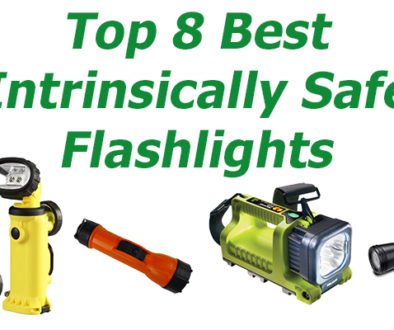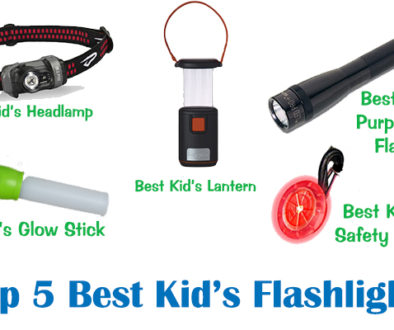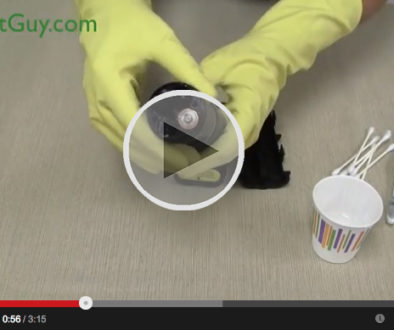Flashlight Safety Ratings and Approvals
Class I, Division 2 – Class II, Division 1 – intrinsically safe – what does it all mean? We outline all you need to know about flashlight Safety Ratings.
**Please note:
This article is meant as a guide to navigate flashlight safety ratings. Please see lights for specific approvals and consult with your Safety Department for appropriate lighting choices.
What is a safety rated flashlight?
A flashlight that is “safety rated” can be safely operated in an area where explosive gases, liquids, dusts or fibers are present or may be present. In short, safety rated flashlights are designed to not be a source of ignition in potentially hazardous environments. These flashlights are generally tested by a certification company such as Underwriters Labs (UL). The rating system is composed of Classes, Divisions, Groups and Temperature codes. Classes identify the type of hazardous material present in the air. Divisions designate the probability that an ignitable concentration of that hazardous material is present. Groups identify what elements are present that have the potential to cause an explosion. Temperature codes list the maximum surface area temperature of the equipment.
Classes:
Classes designate what hazardous materials are present that could cause an explosion.
|
Class |
Type of Hazardous Material |
|
Class I |
Flammable gases, vapors, or liquids. Examples of Class I locations are petroleum refineries, utility gas plants, gasoline storage and dispensing areas, and dry cleaning plants. |
|
Class II |
Combustible dusts. Examples of Class II locations are grain elevators, coal preparation plants, and producers of plastics, medicines, and fireworks, spices, sugar, and cocoa. |
|
Class III |
Ignitable fibers and flyings. Examples of Class III locations are textile mills and plants that create sawdust as a byproduct. |
Divisions:
Divisions designate the probability that an explosion will occur. When a hazardous material is expected to be present in everyday operations, the condition is called normal (Division 1). When a hazardous material will be present only through an accidental rupture or faulty operation, that condition is call abnormal (Division 2).
|
Division |
Presence of Hazardous Material |
|
Division I
|
Where ignitable concentrations of flammable gases, vapors, or liquids can exist all of the time or some of the time under normal operating conditions. Examples of a Division 1 location are loading zones or areas near relief valves at a petroleum refinery because flammable hazardous materials exist under normal operations. |
|
Division II |
Where ignitable concentrations of flammable gases, vapors, or liquids are not likely to exist under normal operating conditions. An example of a Division II location is a storage room with oil drums. An ignitable concentration of gas vapors would only exist under abnormal operating conditions, if a drum were to be leaking. |
Groups:
Groups identify what elements are present that have the potential to cause an explosion. Groups A-D apply to Class I locations. Groups E-G apply to Class II locations.
|
Group |
Nature of Hazardous Material |
|
Group A |
Acetylene (usually used in welding) |
|
Group B |
Hydrogen or gases of equivalent hazard (includes ethylene oxide, propylene oxide, etc) |
|
Group C |
Ethylene or gases of equivalent hazard (includes carbon monoxide, ether, etc) |
|
Group D |
Propane (includes butane, gasoline, natural gas, ammonia, hexane, ethanol, etc) |
|
Group E |
Metal dust (division 1 only – includes aluminum and magnesium dust) |
|
Group F |
Coal dust (includes charcoal dust, coal, etc) |
|
Group G |
Grain dust (includes starch, flour, etc) |
Temperature Codes:
Ignitable gases or combustible dusts can ignite when they come into contact with a hot surface. For example, the ignition temperature of gasoline is 536°F, whereas the ignition temperature for charcoal is 660°F. Temperature codes indicate the maximum surface area temperature of the equipment that can come into contact with the hazardous materials. Temperature codes only apply to Class I and Class II locations.
|
Temperature Code |
Max Surface Temp °F |
Max Surface Temp °C |
|
T1 |
842 |
450 |
|
T2 |
572 |
300 |
|
T2A |
536 |
280 |
|
T2B |
500 |
260 |
|
T2C |
446 |
230 |
|
T2D |
419 |
215 |
|
T3 |
392 |
200 |
|
T3A |
356 |
180 |
|
T3B |
329 |
165 |
|
T3C |
320 |
160 |
|
T4 |
275 |
135 |
|
T4A |
248 |
120 |
|
T5 |
212 |
100 |
|
T6 |
185 |
85 |
Let’s quickly review. Hazardous locations are classified in four ways: TYPE, PRESENCE, NATURE, and TEMPERATURE.
There are three types of hazardous conditions: Class I – flammable gas, vapor, and liquid, Class II – combustible dust, and Class III – ignitable fibers and flyings.
There are two kinds of hazardous conditions: Division 1 – normal, and Division 2 – abnormal.
There is the nature of the hazardous material. Groups A-D in Class I locations and Groups E-G in Class II locations.
Finally, there is the maximum surface temperature of the equipment. In certain environments if the equipment gets too hot, it could cause the hazardous material to ignite on contact.
Let’s illustrate our Code “translation” with an example. How would we classify a storage area where gasoline is contained in closed tanks? Gasoline is a Class I substance (gas, liquid, or vapor). It’s Division 2 because it would only be in the atmosphere if an accidental rupture or leakage occurred. It is Group D material (Propane group) with a T2A Temperature Code (gasoline has an autoignition temperature of 536°F).
Intrinsic Safety:
When a flashlight is referred to as “intrinsically safe,” this means a couple of things. First of all, it means that the flashlight is designed not to produce sparks, or at least not to produce sparks that have enough energy to ignite the surrounding material.
Intrinsic safety also protects against abnormally high temperatures of small components inside the flashlight. If there was an internal short inside the light, the temperature of that component could rise well above the normal operating temperature. In intrinsically safe flashlights, safety measures are put in place to ensure that no one component of the flashlight can reach a temperature that would ignite the hazardous materials in the surrounding atmosphere.
What is the difference between a UL safety rated flashlight and a flashlight deemed intrinsically safe? Many people use the term “intrinsically safe” in a general way to mean any flashlight that has safety approvals. The reality is that a flashlight is only intrinsically safe for the specific environment it was tested for. For example, a Class I, Div 1 flashlight is intrinsically safe for a Class I, Div 1 environment, but it is not necessarily intrinsically safe for a Class II, Div 1 environment.
Explosion Proof:
The term “explosion proof” means that the housing of the device has been engineered to contain an explosion. Should the hazardous materials penetrate the housing and become ignited by an internal component of the device, the explosion will stay contained within the housing.
Many people confuse “explosion proof” and “intrinsically safe” with safety-rated, but they are not necessarily the same. Intrinsically safe flashlights are designed not to ignite the surrounding atmosphere, whereas explosion proof equipment is designed to contain an explosion after it happens. Intrinsically safe flashlights PREVENT an explosion. Explosion proof equipment CONTAINS an explosion. Virtually all safety rated handheld flashlights are intrinsically safe for their specific environments; they are NOT “explosion proof,” nor should they be. The explosion proof term is meant for larger, permanent equipment that can be constructed of stainless steel or cast aluminum to adequately contain an explosion.
Well, that about sums it up for flashlight safety ratings. It’s a lot of information to sort through, but it could help prevent a serious accident by figuring out exactly what type of safety ratings you require for your flashlight. You can find a wide variety of safety-approved flashlights on BrightGuy.com. BrightGuy stocks over 450 types of flashlights and is an authorized distributor for Streamlight, Nightstick, Fenix, Bright Star, Princeton Tec, Petzl, LED Lenser, Pelican, and more.
**Please note:
This article is meant as a guide to navigate flashlight safety ratings. Please see lights for specific approvals and consult with your Safety Department for appropriate lighting choices.
Sources:
Underwriters Laboratories. UL Hazardous Locations Services Brochure 332.2.5M/4/11. Underwriters Laboratories, Inc, 2011. Print
U.S. Department of Labor Occupational Safety & Health Aministration. Hazardous (Classified) Locations. Construction Safety and Health Outreach Program. U.S. Department of Labor, 1996 <http://www.osha.gov/doc/outreachtraining/htmlfiles/hazloc.html>
U.S. Department of Labor Occupational Safety & Health Administration. Occupational Safety and Health Guidelines. US Department of Labor, 1996 <http://www.osha.gov/SLTC/healthguidelines/index.html>
RKI Instruments. What’s the Difference between Explosion Proof and Intrinsically Safe? RKI Instruments, Inc, 2012 <http://www.rkiinstruments.com/pages/faq/Explosion_Proof_Intrinsically_Safe.htm>




How to Choose the right Streamlight Stinger LED Flashlight | Review
January 29, 2013 @ 3:19 pm
[…] Classic. There is also the PolyStinger LED Haz-Lo, a flashlight specifically designed for use in hazardous locations where there is a risk of explosion. So that makes 10 total options in the Streamlight Stinger LED […]
Bayco 5450 Headlamp - Intrinsically Safe | Review
February 11, 2013 @ 2:10 pm
[…] the Bayco 5450 and 5452 dual function intrinsically safe headlamps. Both headlamps are ETL listed intrinsically safe for Class I, II, and III, Div 1, Groups […]
Intrinsically safe Bright Star LED Flashlights | Review
March 7, 2013 @ 4:33 pm
[…] flashlight, the Responder, and the other three are LED versions of their popular WorkSAFE series of intrinsically safe flashlights. Let’s take a closer […]
New Pelican 3315 Safety Approved Flashlight | Review
May 10, 2013 @ 4:12 pm
[…] flashlight. The Pelican 3315 is a compact flashlight that runs on 3 AA batteries. It will be safety rated Class I, II, and III, Div 1, and ATEX Zone 0. Confused about safety ratings? Read our post on […]
New Nightstick Intrinsically Safe Penlights 5410 5412 | Review
September 10, 2013 @ 10:13 am
[…] and the 5412. The penlights will serve as an inexpensive lighting option for those working in hazardous environments. Here are the […]
Top 8 Best Intrinsically Safe Flashlights | Review
May 19, 2014 @ 2:03 pm
[…] environments where ignitable gases and vapors, dusts, or fibers can be present in the air. What does intrinsically safe mean? It means that the flashlight is designed not to produce sparks, or at least not to produce sparks […]